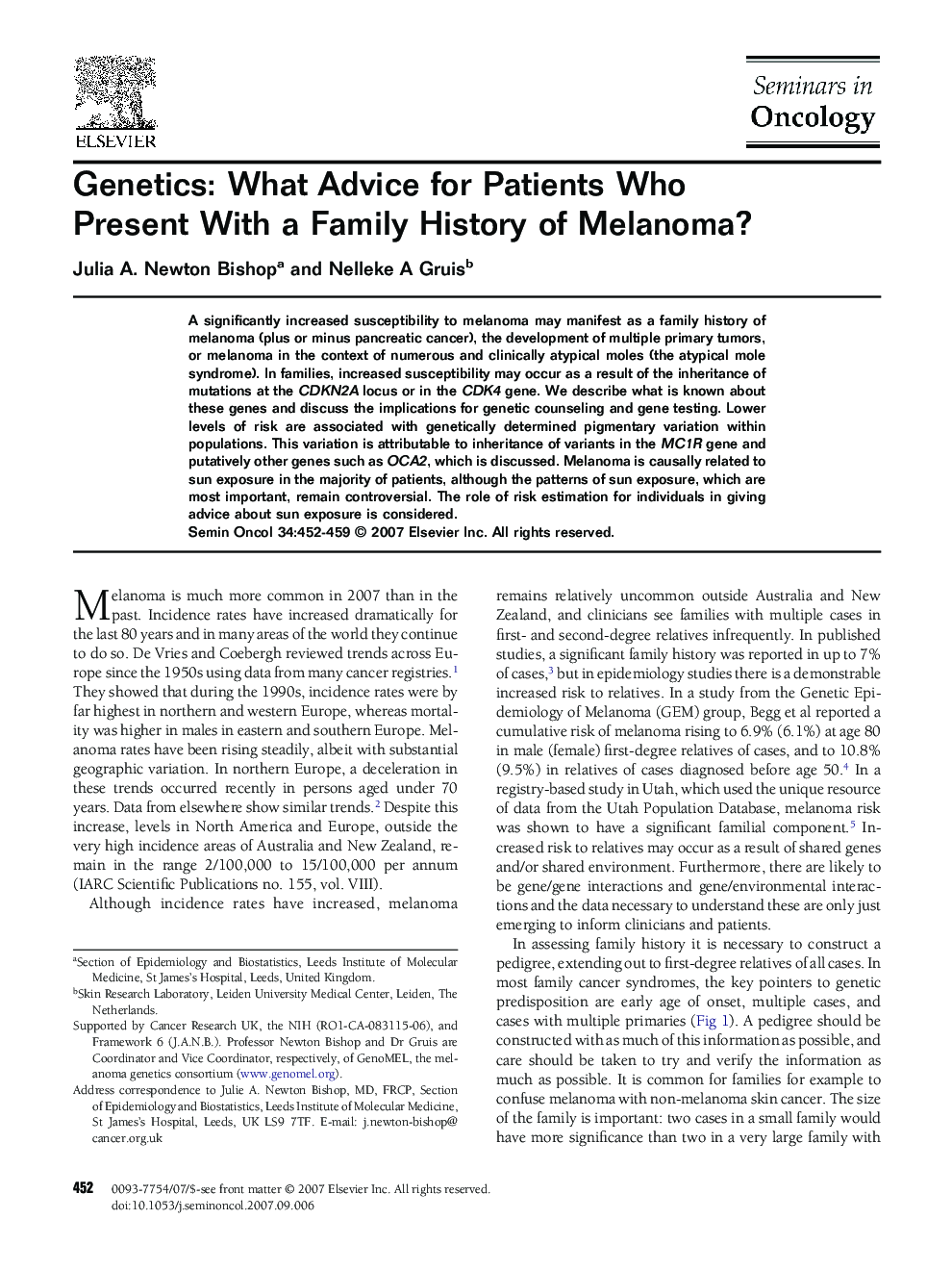| Article ID | Journal | Published Year | Pages | File Type |
|---|---|---|---|---|
| 2162809 | Seminars in Oncology | 2007 | 8 Pages |
Abstract
A significantly increased susceptibility to melanoma may manifest as a family history of melanoma (plus or minus pancreatic cancer), the development of multiple primary tumors, or melanoma in the context of numerous and clinically atypical moles (the atypical mole syndrome). In families, increased susceptibility may occur as a result of the inheritance of mutations at the CDKN2A locus or in the CDK4 gene. We describe what is known about these genes and discuss the implications for genetic counseling and gene testing. Lower levels of risk are associated with genetically determined pigmentary variation within populations. This variation is attributable to inheritance of variants in the MC1R gene and putatively other genes such as OCA2, which is discussed. Melanoma is causally related to sun exposure in the majority of patients, although the patterns of sun exposure, which are most important, remain controversial. The role of risk estimation for individuals in giving advice about sun exposure is considered.
Related Topics
Life Sciences
Biochemistry, Genetics and Molecular Biology
Cancer Research
Authors
Julia A. Newton Bishop, Nelleke A. Gruis,
